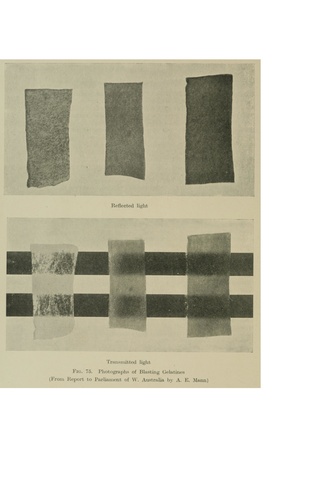Top Qs
Timeline
Chat
Perspective
Gelignite
Explosive material From Wikipedia, the free encyclopedia
Remove ads
Gelignite (/ˈdʒɛlɪɡnaɪt/), also known as blasting gelatin or simply "jelly", is an explosive material consisting of collodion-cotton (a type of nitrocellulose or guncotton) dissolved in either nitroglycerine or nitroglycol and mixed with wood pulp and saltpetre (sodium nitrate or potassium nitrate).
The examples and perspective in this article deal primarily with Ireland and do not represent a worldwide view of the subject. (December 2022) |
Gelignites
It was invented in 1875 by Swedish chemist Alfred Nobel, who also invented dynamite. It is more stable than dynamite, but can still suffer from "sweating" or leaching out nitroglycerine.[1][2] Its composition makes it easily moldable and safe to handle without protection, as long as it is not near anything capable of detonating it.
One of the cheapest explosives, it burns slowly and cannot explode without a detonator, so it can be stored safely.[3]
In the United Kingdom, an explosives certificate issued by the local Chief Officer of Police is required for possession of gelignite.[4] Due to its widespread civilian use in quarries and mining, it has historically been used by rebel groups such as Mudiad Amddiffyn Cymru,[5] the Provisional Irish Republican Army (PIRA),[6] and the Ulster Volunteer Force,[7] who often used gelignite as a booster.
Remove ads
Frangex
Summarize
Perspective
In the 1970s, Irish Industrial Explosives Limited produced 6,000 tonnes annually of Frangex, a commercial gelignite intended for use in mines and quarries. It was produced at Ireland's largest explosives factory in Enfield, County Meath. The Gardaí and the Irish Army patrolled the area, preventing the Irish republicans from gaining direct access. However, republican paramilitaries indirectly acquired amounts of the material.
In early 1982 the Irish National Liberation Army stole 450 kg (1,000 lb) of Frangex commercial explosives from the Tara mines in County Tipperary, enabling the organisation to intensify its bombing campaign.[8] The INLA carried out its deadliest attack in December 1982 with the bombing of the Droppin' Well disco in Ballykelly, County Londonderry, which catered to British military personnel, in which 11 soldiers on leave and six civilians were killed. A bomb, estimated to be 2.5 to 4.5 kg (5 to 10 lb) of Frangex explosive, small enough to fit into a handbag, was left beside a support pillar and brought down the roof when it exploded.[9]
At the time of PIRA bomber Patrick Magee's arrest on 22 June 1985, 3.5 kilograms (8 lb) were found in his possession,[10] while 300 kilograms (660 lb) were discovered in a hijacked road tanker in January 1976.[11] Gelignite material stolen by the IRA from quarries, farms and construction sites in the Republic was among the 48,000 lb (22 t) of explosives detonated in Northern Ireland in the first six months of 1973.[12] PIRA volunteer, later informer, Sean O'Callaghan estimated that planting 11 kg (25 lb) of Frangex would kill everyone within an 18-metre (60 ft) radius.[13]
The Real IRA (RIRA) also acquired Frangex, and, in December 2000, eighty sticks were discovered on a farm in Kilmacow, County Kilkenny, near Waterford.[14]
Remove ads
References
Wikiwand - on
Seamless Wikipedia browsing. On steroids.
Remove ads

